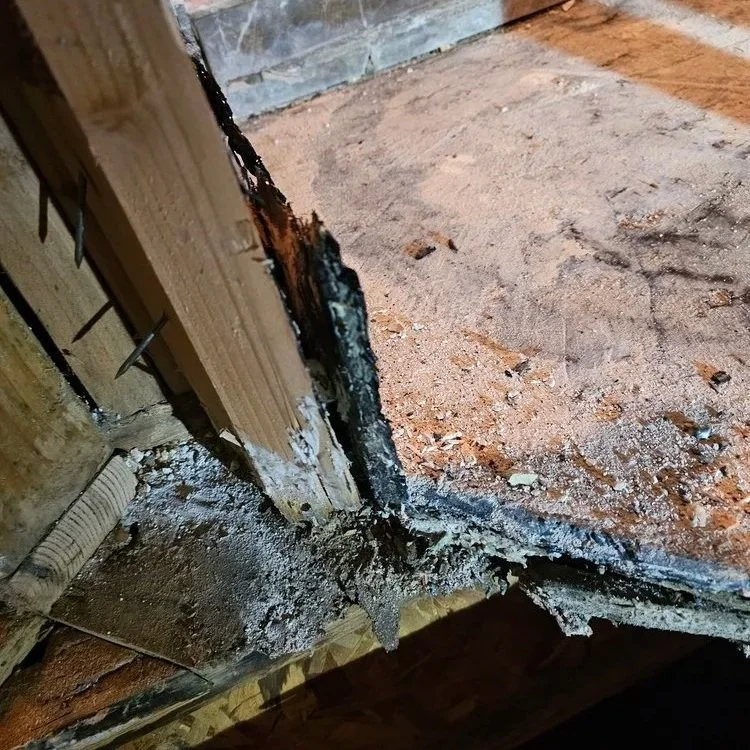Restoring Strength After Wood Damage
Addressing these problems promptly is crucial to maintaining the property's longevity.
Wood is a timeless building material that adds charm and character to a home. Unfortunately, over time, wood can be compromised by various issues that affect its integrity. Among the most common culprits are dry rot and termite damage. These issues not only affect the appearance of wood structures but also undermine the strength and safety of a home. Addressing these problems promptly is crucial to maintaining the property's longevity.
Understanding Dry Rot and Termite Damage
Dry rot and termite damage are two of the most notorious forms of wood deterioration. While they both weaken wood, their causes and symptoms differ.
Dry rot, caused by a specific type of fungus, thrives in moist conditions and can silently deteriorate wooden structures. The fungus spreads by releasing spores that colonize damp wood, creating a network of decay. What makes dry rot particularly dangerous is its ability to spread without being immediately visible. The wood often appears dry and cracked, yet the fungus is busy undermining the strength from within.
Termite damage, on the other hand, is the result of an infestation of wood-eating insects. Termites are small but mighty creatures capable of causing extensive damage to wood structures. They tunnel through wood to feed on the cellulose, leaving behind hollowed-out, weakened timber. The signs of termite damage are typically visible through holes, tunnels, or even the presence of discarded wings around your home.
Whether caused by dry rot or termites, the damage can be extensive. However, these issues are not without solutions. With prompt attention and professional repair, the strength and beauty of wood can be restored.
Repairing Dry Rot
Addressing dry rot begins with a thorough inspection to determine the extent of the damage. If dry rot is detected early, the repair process can be relatively simple. First, the affected area needs to be isolated to prevent the fungus from spreading further. The compromised wood should be removed and replaced with new, healthy wood. If the rot is localized to a smaller section, sometimes the area can be treated with a special fungicide before the wood is replaced.
In more severe cases, where the rot has spread to multiple areas of a home, structural reinforcements might be necessary. It's essential to note that dry rot can compromise the structural integrity of a home, making professional evaluation and repair crucial. Simply patching the visible damage without addressing the underlying issue will only lead to future problems. Any excess moisture in the area must also be addressed to prevent further fungal growth. Fixing leaks or improving ventilation can help keep moisture levels under control.
Termite Damage Repair
When termites are involved, the first step is to eliminate the infestation. Before any repairs are made, it's vital to call in a pest control professional to treat and eradicate the termites. Even if visible signs of the insects are no longer present, termite activity may still be ongoing in hidden areas of your home. Once the infestation has been addressed, the focus shifts to repairing the damage that has been done.
Termite damage repair typically involves removing the compromised wood and replacing it with fresh, untreated timber. If the damage is prevalent, structural beams or load-bearing components may need to be replaced. Depending on the severity, the repair process could involve rebuilding sections of the affected wood framework.
Beyond replacing the damaged wood, it's essential to protect the new wood from future infestations. A treatment plan, such as applying termite-resistant coatings or using pressure-treated wood, can help reduce the likelihood of a recurrence. Termite-proofing measures around the home's exterior, such as eliminating moisture sources and sealing cracks, can also go a long way in keeping termites at bay.
Preventing Future Wood Damage
Preventing dry rot and termite damage is always more cost-effective than repairing it. Fortunately, there are several proactive steps homeowners can take to protect their wooden structures.
To combat dry rot, focus on controlling moisture levels in and around the home. Regularly inspect areas such as basements, attics, and crawl spaces for indications of moisture or dampness. Any leaks in the roof, plumbing, or windows should be promptly repaired to keep water from seeping into wooden structures. Improving ventilation in these areas will also help keep wood dry and free from rot-causing fungus.
When it comes to termites, prevention starts with reducing the conditions that attract them. Keeping wood piles, mulch, and other organic materials away from the foundation of your home can help stop termites from finding a food source. Regularly inspect the perimeter of a house for any indications of termites, such as small holes in wood or the presence of mud tubes along foundation walls. Seal cracks and gaps around windows and doors to prevent termites from entering the home.
Besides these preventive measures, regular inspections by professionals specializing in dry rot and termite damage can catch problems early, before they become significant issues. Routine maintenance is key to maintaining the strength and durability of wood throughout a home.
Restoring Structural Integrity
While the repair process for dry rot and termite damage may seem daunting, restoring the structural integrity of your home is possible with the right approach. By replacing damaged wood, addressing moisture problems, and using protective treatments, homeowners can restore their homes to their original strength and beauty.
Professional repair services can help navigate the complexities of these issues, offering both immediate solutions and long-term protection. Whether dealing with dry rot or termites, it's important to remember that prompt action is critical to safeguarding the structural integrity of the home. Catching problems early and addressing them correctly will not only prevent further damage but also provide peace of mind, knowing that the home is secure.
A home is a valuable investment, and its wood structures play a crucial role in maintaining both its beauty and safety. By taking the necessary steps to repair and prevent dry rot and termite damage, a home will remain strong, functional, and aesthetically pleasing for years to come.

